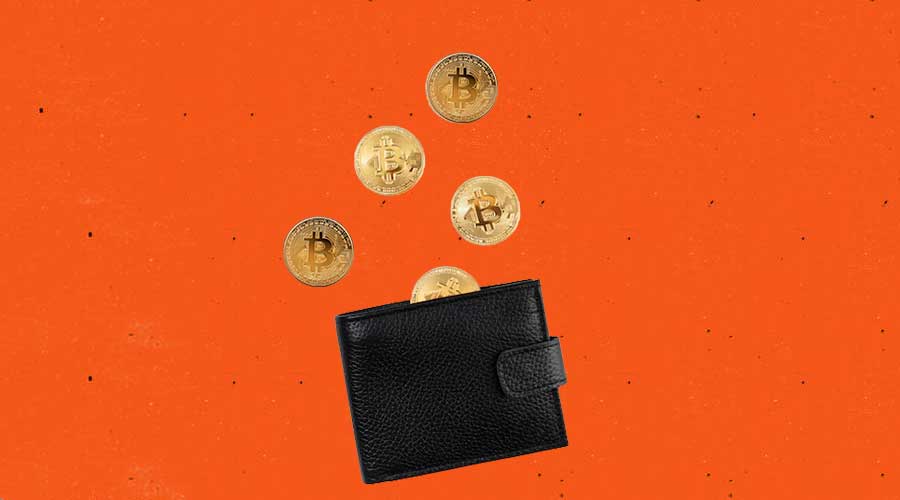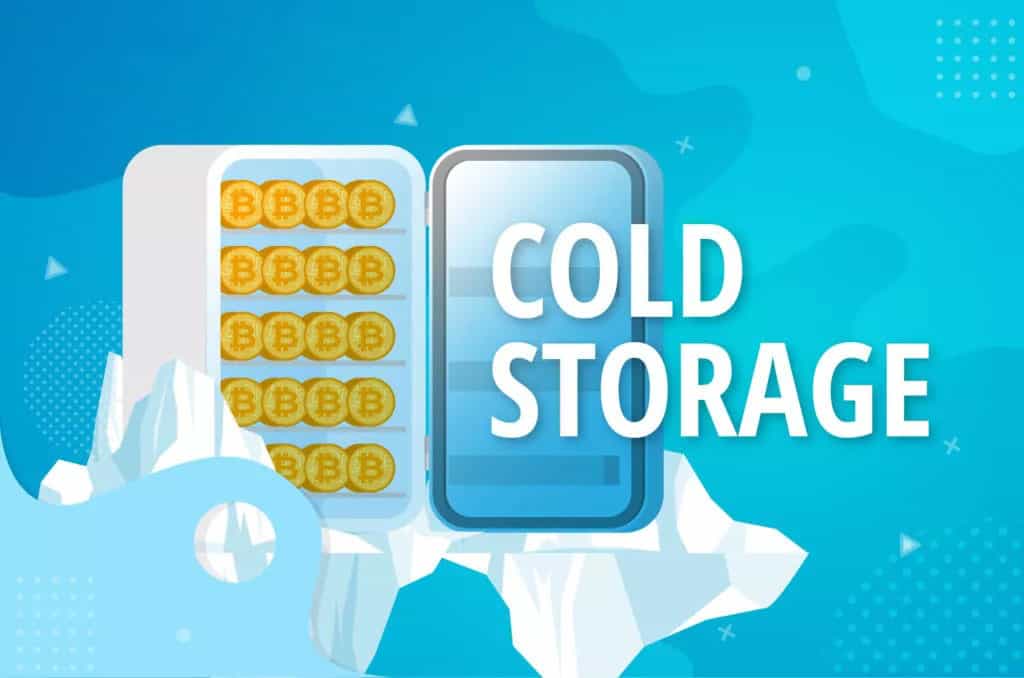As you dive into the crypto world, the choice between hot wallets vs cold wallets is crucial for your digital assets’ safety. I’ve got the lowdown on what keeps your digital fortune secure and accessible. Think of hot wallets like your everyday cash — handy but risky if not handled correctly. Cold wallets, on the other hand, are akin to a safe deposit box, solid but not as quick to open. Let’s untangle the specifics together and steer clear of missteps that could cost you dearly.
Understanding the Basics of Cryptocurrency Wallets
Defining Hot and Cold Wallets
Hot wallets are like your pocket for digital money. They are online and easy to use. Cold wallets are offline, like a safe for your crypto. They are harder to use but safer. Hot wallets are good for spending and trading. Cold wallets are for saving your money for a long time. Their security is the biggest difference. Hot wallets are at risk from internet hackers. Cold wallets are not connected to the web, so they are safer.
The Importance of Cryptocurrency Storage Security
Keeping your digital money safe is like locking up a treasure. If you pick a bad lock, a thief can steal your coins. And just like a treasure map, if you lose your private keys or forget your seed phrase, your treasure might be lost forever. So, storing digital currency safely is key. Understanding wallet encryption is how you build a strong lock for your coins. Using things like multi-signature wallets or USB cold storage for cryptocurrencies helps too. You have to trust the wallet you pick. The trust comes from knowing it keeps your money safe and ready when you need it.
In hot vs. cold, think about how often you need your coins. Hot wallets are good for quick trades. Cold wallets are better for a long-term plan. But remember, even cold wallets need a good backup. This stops you from losing your coins if something bad happens. You’re the boss of your crypto. That means you must choose the best way to keep it safe.
Assessing the Risks and Benefits
Pros and Cons of Hot Wallets for Accessibility
Hot wallets are here to make life easy. They link to the internet and let you access your cryptocurrency fast. They are software that you can use on your phone or computer. Hot wallets are perfect when you want to trade or pay with crypto often. The main benefit is their ease of access. With a hot wallet, you can buy, sell, or move crypto quickly.
But hot wallets also have risks. Since they’re online, hackers might target them. Think of hot wallet security like locking your car. You can hop in and drive away fast. But if a thief sees your unlocked car, they may try to steal it. That’s why online wallet security matters so much. You must pick a strong password and keep your software up to date. If not, you might lose your digital cash.
Hot wallet hacking incidents show that even popular wallets can have weak spots. It’s scary to think that someone might steal your money without even touching it. So, if you use hot wallets, learning about wallet encryption is vital. It’s like having a secret code that only you know.
Advantages of Cold Storage for Asset Protection
Now, let’s chat about cold storage, the superhero of cryptocurrency storage security. Cold storages are offline wallets. Think of them as vaults for your digital coins. They come in forms like hardware wallets, USB drives, or even paper wallets. What’s great about cold storage? It’s perfect for keeping big amounts of crypto away from thieves.
Theft prevention is a big plus with cold wallets. Unlike hot wallets, they are not usually connected to the internet. It’s like keeping your jewels in a safe that no one can get to. Instead of worrying about hackers, you focus on not losing or damaging your cold wallet.
A hardware wallet is a popular type of cold storage. Think of it as a mini-computer that holds your crypto. You plug it into your main device when you need to make a transaction. Then, you take it out and store it safely. It keeps your coins secure and away from online threats.
But there’s a downside. Cold wallets are not as quick to use as hot wallets. If you want to trade your crypto, you need to plan ahead. It’s like needing to get something from a safe deposit box at the bank. You cannot just walk in and out fast. You may also need to keep your recovery options in check. Think of it like having a spare key for your safe. You might need to use a seed phrase that helps you recover your coins if something goes wrong with your cold wallet.
Overall, cold wallet maintenance is simple. It might require a few updates here and there, but there’s not much to worry about. Cold storage is mainly about keeping your crypto safe over time. It’s the best bet for peace of mind.
So there you have it. Hot wallets offer convenience, while cold wallets provide security. Now you can choose what’s best for you, balancing speed, safety, and accessibility.
Enhancing Security Through Best Practices
Managing Private Keys and Recovery Strategies
Your crypto lives or dies by your private keys. They’re like secret codes that unlock your wealth. So, you must keep them safe. Think of your private key as the key to your safe. If someone else finds it, they can take everything inside. To stop this, never share your key. Even better, write it down and keep it somewhere only you know.
When setting up a wallet, you get a recovery phrase. This is a group of words given in a specific order. Write them down. Don’t just make a digital note. Paper doesn’t get hacked, after all. If you lose your wallet or forget your key, this phrase will save you. It’s your crypto lifeboat.
Implementing Multi-Signature and Backup Protocols
Now, what about multi-signature wallets? These need more than one key to open. It’s like a bank vault that needs two people to unlock it. This way, one lost key doesn’t spell disaster. Plus, it’s harder for thieves to steal your crypto. If you’re in a group or you have big amounts of crypto, think about using a multi-signature wallet. It adds another layer of protection.
Backing up is just as important. Copy your wallet data to a safe place. Some use USB sticks or even special backup devices. Remember, though, just like your keys, keep your backups hidden. If someone can grab your backup, they can grab your crypto.
Practicing these steps makes your digital fortune tougher to crack. Think of it as building a fortress around your cash. The thicker the walls, the safer you sleep at night.
Choosing the Right Wallet for Your Needs
Comparing Wallet Types for Efficiency
When it comes down to keeping your digital coins safe, picking the right wallet is key. Think of it this way: your wallet is like a safe for your virtual money. But not all safes are the same, right? You’ve got online wallets—these are called hot wallets. They’re always connected to the internet, making them super easy to use. But because they’re always online, they can be a target for hackers.
Just type “hot wallet hacking incidents” in any search and you’ll see what I mean. Hot wallets are handy, sure. They let you buy and sell coins fast, and that’s a big deal when prices move quick. Still, you need to be smart about online wallet security. Nobody wants their money taken by a bad guy.
Now, let’s chat about offline wallets, what some folks call “cold storage.” These are like the safes hidden behind a painting. They’re not hooked up to the net, so hackers can’t just stumble into them. You can store your stash of digital money in hardware wallets (think fancy USBs), paper wallets, or even on a computer that never touches the internet (an “air-gapped” computer). When it comes to locking down your funds, these cold wallets are tough to beat.
But it’s not just about security. You also want to grab your cash when you need it, right? That’s where hot wallets shine. They’re like the wallet in your pocket, easy to open and get to your cash.
Balancing Liquidity and Security in Crypto Transactions
Now here’s the dealbreaker for some—how quick can you touch your money? If you’re trading every day, speed matters a lot. Hot wallets make buying and selling a breeze, because your cash is always ready. That’s what we call “hot wallet liquidity.” But imagine this: you’re saving up, not planning to spend those coins soon. A cold wallet keeps them safe and sound, and you won’t worry about them every time you hear about a new cyber heist.
And folks, this is not just about choosing one and forgetting the other. Many smart crypto users will use both types of wallets. They keep some money in a hot wallet for daily use and the rest in cold storage for safekeeping. This mix is like having some cash in your pocket and the rest in a bank vault.
Having a mix of both can be the sweet spot, blending quick access and tight security. When it’s time to move money, knowing you’ve got the best of both worlds can be a real comfort.
Let me make it simple: hot wallets for trading and spending, cold wallets for saving and sleeping easy. Just remember, storing digital currency safely means keeping an eye on how you do it. Don’t lose your keys (we’re talking both password and “seed phrases” for recovery), and understand how wallet encryption keeps your cash secure.
See, it’s a bit like a dance between keeping your coins ready to go and making sure no one else can get their hands on them. It’s all about feeling good about where your digital fortune sleeps at night.
In this guide, we dug deep into crypto wallets. We looked at hot and cold wallets and why keeping your digital coins safe matters. Both have pros and cons—hot wallets make getting to your funds easy, cold wallets keep them safe.
Next, we explored risks and wins. Hot wallets are great for quick access but less secure. Cold wallets are super safe but not as speedy for daily use.
We also covered key tips to lock down your crypto. Keeping track of your private keys and having a backup plan are must-dos. Adding extra steps like multi-signature setups can add more security.
Lastly, we talked about picking a wallet. This means thinking about how you’ll use your crypto and how much risk you’re okay with.
To wrap up, remember, crypto safety is key. Think about what you need, then choose smart. Stay safe and keep your digital treasure secure. Thanks for reading, and go manage your crypto with confidence!
Q&A :
What is the difference between hot and cold wallets?
Hot wallets are digital wallets that are connected to the internet, offering convenience for quick transactions and easy access to your digital assets. They’re typically used for smaller amounts of cryptocurrency that you might want to use regularly. In contrast, cold wallets are physical devices or offline wallets that store your cryptocurrency offline. They offer enhanced security since they are less susceptible to online hacking attempts and are best used for storing large amounts of cryptocurrencies that you don’t need to access frequently.
Are cold wallets more secure than hot wallets?
Yes, generally speaking, cold wallets are considered more secure than hot wallets. Because cold wallets are not connected to the internet, they are not vulnerable to online hacking attacks, phishing schemes, or other cyber threats that could compromise your cryptocurrency. On the other hand, hot wallets, while convenient, are more susceptible to these types of risks because of their internet connectivity.
How do I choose between using a hot wallet or a cold wallet?
Choosing between a hot wallet and a cold wallet depends on your specific needs and how you plan to use your cryptocurrency. If you need to trade or spend your crypto frequently, a hot wallet’s convenience and quick access might make it the better choice. However, if you’re holding cryptocurrency as a long-term investment or have large amounts that you don’t need regular access to, the enhanced security of a cold wallet would be more appropriate.
Can hot wallets and cold wallets be used together?
Yes, hot wallets and cold wallets can certainly be used together, and this practice is often recommended as part of a balanced crypto storage strategy. You can use a hot wallet for day-to-day transactions with a limited amount of cryptocurrency, while retaining the bulk of your assets in a more secure cold wallet. This way, you benefit from both the convenience of a hot wallet and the security of a cold wallet.
What are some examples of hot wallets and cold wallets?
Examples of hot wallets include desktop wallets, mobile wallets, and web-based wallets like Coinbase Wallet, MetaMask, and Electrum. These are applications or platforms that require an internet connection to function. Cold wallets, on the other hand, are typically hardware wallets or paper wallets. Hardware wallets like Ledger Nano S, Trezor, and KeepKey are physical devices designed to securely store your cryptocurrency offline. Paper wallets involve printing or writing down your private keys and storing them in a safe place, away from potential digital threats.





